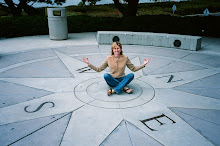

We show up at dusk at the road barrier just outside Richmond Park on a day neither the fog nor the shock of the tragedies in Japan ever abated. A small knot of the "wellies and anorak set" plus two in suits, quickly identified as town councilmen for the Richmond Park, Ham and Petersham districts, David William and Brian Miller, all hold blue buckets and survey the knee-high chicken wire fence lining Church Road that was to corral the migrating toads. It was our charge, as the newly inducted Toad Patrol, to carry the common toads, or bufo bufo across the road and further them on their journey to their ancestral spawning pond, now apparently enclosed in the Sultan of Brunei's estate.
"There are holes in the wall they can wriggle through," says Jonathan Fray, who lives just down the road. He and his partner, Diane Slater, instigated this amphibian rescue effort, after watching hundreds of their numbers squashed on this road last year. Alison, the Ecology Officer from the Richmond Borough Environment Directorate, is handing out Risk Assessment forms to the Patrol, warning us that we had a high risk of colliding with fast cars and a medium-to-high risk of drowning in deep water as well as contacting toad poisons. This gets my attention.
I'm directed to the supplementary sheet which whimsically cites a one Miss Ormerod, a Victorian lady who determines to find out for herself what it was like to eat a great crested newt. Now whether she was sampling what MacBeth's weird sisters evidently found to be a revelatory delicacy, or looking for an equivalent of our blowfish sushi experience--a slight tingling of the lips, but short of convulsions, wasn't specified in the handout. Only that it was not recommended that we try licking a toad, lest we endure the foaming at the mouth and shivering fits that beset Miss Ormerod. Oh these wacky Brits. They're only reserved on the outside, just propose a lip smack with a toad and see how fast they break into smiles.
As it turns out, the poison toads emit from their 'warts' is pretty much their only defense from predators-- not being as spry as frogs. Still a toad has to be pushed pretty far before he releases his amines and alkaloids (one of them, omethyl bufotenine, is said to be a potent hallucinogen). As in, teeth clamping down on his back. I'm put at ease by Alison coming forward with a bufo male who clings to her wool jacket and looks about quite calmly at our huddle, even as she picks up his feet to show us the knobs beneath his long toes that identify him as a male. A councilman surfaces with a female, twice the size of the male and rather more anxious to be on her way, quite bulging with eggs, like an overstuffed soft-sided valise.
A biker speeds through in the deepening dusk, and then a few more, ignoring the Traffic Diversion sign. David William calls after them, "You can't ride through here," but is largely ignored. One stops and asks why not. Evidently not all residents share the concern of Froglife, the booster association trying to avert amphibian disaster. This little group has transported hundreds of toads across Church Road in the last few weeks, while Froglife reports forty thousand more toad lives saved across Britain each season.
But two toads is all it was to be tonight. Diane says it may not be warm or wet enough tonight for the hoardes to emerge. "If you can see your breath," Jonathan adds, "you probably won't see many toads." We walk the wire fence but see no movement among the fallen alder leaves, so will come back on a warmer, wetter evening.
Perhaps tonight as the Toad Patrol wend their separate ways back to the latest flash of unimaginable suffering around the planet, they will keep this little song from Wind in the Willows as the selvedge of their minds, and dream of carrying blue pailfulls of bufo bufo to safety: 'Helper and healer, I cheer--Small waifs in the woodland wet--Strays I find in it, wounds I bind in it--Bidding them all forget.'




